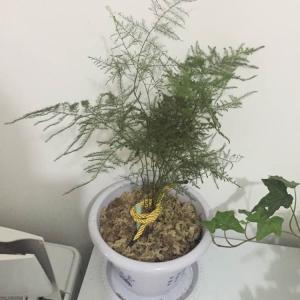文章
Dummer. ゛☀
2017年07月14日

Family - Fabaceae
Stems - To 1.5m tall, branching, glabrous, glaucous, herbaceous.
Leaves - Alternate, trifoliolate, at least some with petiole .2-1.5cm long. Leaflets oblong, oblanceolate, or narrowly obovate, +/-6cm long, 2cm broad, glabrous, glaucous below, entire, minutely mucronate(-1mm long). Center leaflet sessile or on stalk shorter than lateral leaflets. Stipules to +1cm long, glabrous, erect, +2mm wide.
Inflorescence - An axillary raceme to +30(50)cm long (high).
Flowers - White, pedicillate, 2-3cm long, papilionaceous. Calyx tube not more than 1/2 the length of the corolla, cylindrical, typically -1cm long. Stamens 10. Fruits inflated, cylindrical, 2.5-4cm long, 1-1.5cm wide, many seeded, with beak at apex +/-5mm long.
Flowering - May - July.
Habitat - Roadsides, railroads, wet low ground, prairies, pastures.
Origin - Native to U.S.
Other info. - This plant is typically taller than other species of Baptisia in Missouri. It is an attractive plant when flowering and is sometimes cultivated.
The genus name comes from the Greek word "bapto" which means "to dye" because some of the darker flowered species were used as dyes.
A synonym is B. lactea (Raf.) Thieret.
Stems - To 1.5m tall, branching, glabrous, glaucous, herbaceous.

Leaves - Alternate, trifoliolate, at least some with petiole .2-1.5cm long. Leaflets oblong, oblanceolate, or narrowly obovate, +/-6cm long, 2cm broad, glabrous, glaucous below, entire, minutely mucronate(-1mm long). Center leaflet sessile or on stalk shorter than lateral leaflets. Stipules to +1cm long, glabrous, erect, +2mm wide.
Inflorescence - An axillary raceme to +30(50)cm long (high).
Flowers - White, pedicillate, 2-3cm long, papilionaceous. Calyx tube not more than 1/2 the length of the corolla, cylindrical, typically -1cm long. Stamens 10. Fruits inflated, cylindrical, 2.5-4cm long, 1-1.5cm wide, many seeded, with beak at apex +/-5mm long.

Flowering - May - July.
Habitat - Roadsides, railroads, wet low ground, prairies, pastures.
Origin - Native to U.S.
Other info. - This plant is typically taller than other species of Baptisia in Missouri. It is an attractive plant when flowering and is sometimes cultivated.
The genus name comes from the Greek word "bapto" which means "to dye" because some of the darker flowered species were used as dyes.
A synonym is B. lactea (Raf.) Thieret.
0
0
文章
蒋欣
2017年07月13日

一、#雀舌黄杨 盆景的养护方法
1、生长环境
雀舌黄杨喜温暖湿润和阳光充足环境,耐干旱和半阴,要求疏松、肥沃和排水良好的沙壤土。
2、浇水
第一步,冲干不动土(满足盆内需水量);
第二步,枝叶要湿透(多角度浇);
第三步,喷雾。
暑天或温度在20℃以上,盆内不缺水,就按第二、第三步浇;温度在20℃以下10℃以上,盆内又不缺水,冬天上午在阳光下,一天一次都按第三步浇水。秋天“白露”以后,等露水干了,按第三步喷水。霜天早晚不浇水;“三九天”寒潮来之前不浇水以防冻土,冻枝叶,同样要保持盆内滤水通气好。
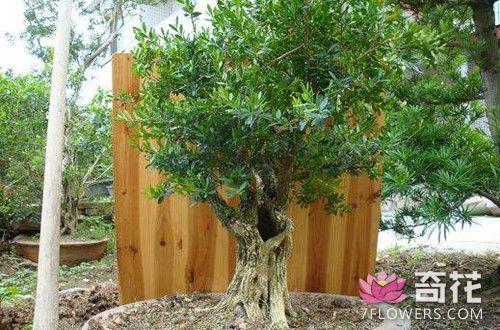
3、施肥
(1)可常年叶面喷施非常稀薄的氮肥(尿素稀释液,2000倍),切忌不能沾磷肥及钾肥
(2)雀舌黄杨的肥要坚持以蔸肥为主,以自然肥为主,以人畜粪便为主。
(3)慎施鸡鸭粪和高效肥,切记不能施没有腐熟的肥和过量施肥,要做到薄肥勤施。
(4)在季节变换前,施点季节肥,如初春施催芽肥,夏天施壮叶肥,暑天施抗温肥,冬天施保温肥;
(5)每次修剪后,施点补尝肥,雨季和暑天盆内过水多施点补充肥,长势不好的要要施酌情肥。
(6)平常浇水的时候,也可掺入微量氮肥,那样养出的叶片非常漂亮,深绿色,有一层光泽。
4、摘心
雀舌黄杨盆景主干长势特慢,可嫩枝条长势却非常的快,惟有用“摘心”来控制,才能保证观赏价值。在枝条没有木质化之前,留一对,最多两对嫩叶片,其余摘掉或剪掉,在适当的水,肥等条件下,十天半月它就会发出两个嫩芽来。就这样周而复始,它的枝条显得短而粗,叶片可以2的积数倍增,不断提高观赏价值。
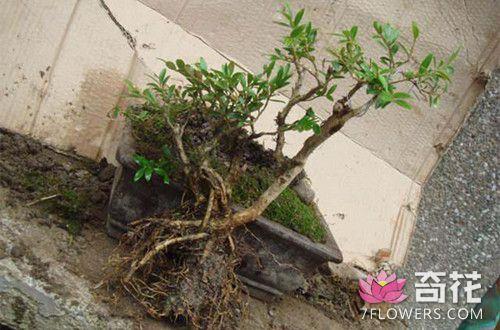
5、翻盆
一般2~3年进行一次,时间以春季萌发前为好。结合翻盆剪去部分老根及过长过密根系,换去1/2旧上,塞以肥沃疏松的培养土,以利根系发育。
6、防病治虫
黄杨主要虫害有介壳虫和黄杨尺螃,介壳虫可用人工刷洗杀之,或用80%敌敌畏1500倍液喷杀;黄杨尺嫂用80%敌百虫可狙性粉剂喷杀,或用40%氧化乐果1000~2000倍喷杀。主要病有煤污病,会引起落叶现象,防治关键是清除介壳虫,并经常喷叶面水,冲洗灰尘,使之生长良好。
二、注意事项
黄杨忌强光,栽植过程中只宜散光,不宜强光曝晒。刚下山的、或长途运输及刚翻盆的黄杨,先要阴养一段时间,再转入正常养护。雀舌黄杨盆景的摆放,最好能选择上午能晒阳,下午较阴凉,空气流通好,雨露靠自然的地方为佳。如果室内观赏,最好十天、半月后,让它又去日晒雨淋。
1、生长环境
雀舌黄杨喜温暖湿润和阳光充足环境,耐干旱和半阴,要求疏松、肥沃和排水良好的沙壤土。
2、浇水
第一步,冲干不动土(满足盆内需水量);
第二步,枝叶要湿透(多角度浇);
第三步,喷雾。
暑天或温度在20℃以上,盆内不缺水,就按第二、第三步浇;温度在20℃以下10℃以上,盆内又不缺水,冬天上午在阳光下,一天一次都按第三步浇水。秋天“白露”以后,等露水干了,按第三步喷水。霜天早晚不浇水;“三九天”寒潮来之前不浇水以防冻土,冻枝叶,同样要保持盆内滤水通气好。

3、施肥
(1)可常年叶面喷施非常稀薄的氮肥(尿素稀释液,2000倍),切忌不能沾磷肥及钾肥
(2)雀舌黄杨的肥要坚持以蔸肥为主,以自然肥为主,以人畜粪便为主。
(3)慎施鸡鸭粪和高效肥,切记不能施没有腐熟的肥和过量施肥,要做到薄肥勤施。
(4)在季节变换前,施点季节肥,如初春施催芽肥,夏天施壮叶肥,暑天施抗温肥,冬天施保温肥;
(5)每次修剪后,施点补尝肥,雨季和暑天盆内过水多施点补充肥,长势不好的要要施酌情肥。
(6)平常浇水的时候,也可掺入微量氮肥,那样养出的叶片非常漂亮,深绿色,有一层光泽。
4、摘心
雀舌黄杨盆景主干长势特慢,可嫩枝条长势却非常的快,惟有用“摘心”来控制,才能保证观赏价值。在枝条没有木质化之前,留一对,最多两对嫩叶片,其余摘掉或剪掉,在适当的水,肥等条件下,十天半月它就会发出两个嫩芽来。就这样周而复始,它的枝条显得短而粗,叶片可以2的积数倍增,不断提高观赏价值。

5、翻盆
一般2~3年进行一次,时间以春季萌发前为好。结合翻盆剪去部分老根及过长过密根系,换去1/2旧上,塞以肥沃疏松的培养土,以利根系发育。
6、防病治虫
黄杨主要虫害有介壳虫和黄杨尺螃,介壳虫可用人工刷洗杀之,或用80%敌敌畏1500倍液喷杀;黄杨尺嫂用80%敌百虫可狙性粉剂喷杀,或用40%氧化乐果1000~2000倍喷杀。主要病有煤污病,会引起落叶现象,防治关键是清除介壳虫,并经常喷叶面水,冲洗灰尘,使之生长良好。
二、注意事项
黄杨忌强光,栽植过程中只宜散光,不宜强光曝晒。刚下山的、或长途运输及刚翻盆的黄杨,先要阴养一段时间,再转入正常养护。雀舌黄杨盆景的摆放,最好能选择上午能晒阳,下午较阴凉,空气流通好,雨露靠自然的地方为佳。如果室内观赏,最好十天、半月后,让它又去日晒雨淋。
0
1
文章
Dummer. ゛☀
2017年07月13日

Family - Asclepiadaceae
Stems - To +1m tall, densely pubescent in upper 1/2, sparse pubescent to glabrous below, herbaceous, simple, erect to ascending, from a thick taproot, with milky sap, often reddish in strong sun.
Leaves - Alternate, short-petiolate, dense on stem. Petiole to 7mm long, scabrous. Blade linear-lanceolate, entire, to +13cm long, 1.5cm broad, scabrous on margins and midrib. Margins thickened and often reddish.
Inflorescence - Axillary umbellate cymes with +/-60 flowers. Peduncles dense pubescent. Pedicels hispidulous, to +/-1.5cm long in flower. Cymes subtended by linear bracts to 6mm long. Bracts pubescent.
Flowers - Petals 5, reflexed, to 5mm long, 1.5mm broad, glabrous or very sparse pubescent, greenish white and purplish at apex. Anther head 3mm long(tall), 2.2mm in diameter. Pollinia 1.4mm long. Hoods 2.1mm long, whitish with purple tinge at base, appressed and attached to column for most of length. Carpels 2, 2.1mm long, glabrous. Sepals 5, reflexed, ovate, 2.1mm long, 1.2mm broad, hispidulous externally, glabrous internally, reddish at apex. Follicles fusiform, erect, to +12cm long, +/-1cm in diameter, pubescent. Seeds to 9mm long. Coma whitish, to +3cm long.
Flowering - May - August.
Habitat - Prairies, glades, and pastures.
Origin - Native to U.S.
Other info. - I placed this species in the white flowers section of this site because from a distance the entire inflorescence has a whitish appearance. Close up, however, the flowers have a definite purplish-green tinge. This species is easy to ID in the field because of its stout pubescent stems, many flowered inflorescences, and linear lanceolate leaves (which are alternate). The plant is common throughout most of the state except for apparently some areas of the Ozarks.
Stems - To +1m tall, densely pubescent in upper 1/2, sparse pubescent to glabrous below, herbaceous, simple, erect to ascending, from a thick taproot, with milky sap, often reddish in strong sun.

Leaves - Alternate, short-petiolate, dense on stem. Petiole to 7mm long, scabrous. Blade linear-lanceolate, entire, to +13cm long, 1.5cm broad, scabrous on margins and midrib. Margins thickened and often reddish.
Inflorescence - Axillary umbellate cymes with +/-60 flowers. Peduncles dense pubescent. Pedicels hispidulous, to +/-1.5cm long in flower. Cymes subtended by linear bracts to 6mm long. Bracts pubescent.
Flowers - Petals 5, reflexed, to 5mm long, 1.5mm broad, glabrous or very sparse pubescent, greenish white and purplish at apex. Anther head 3mm long(tall), 2.2mm in diameter. Pollinia 1.4mm long. Hoods 2.1mm long, whitish with purple tinge at base, appressed and attached to column for most of length. Carpels 2, 2.1mm long, glabrous. Sepals 5, reflexed, ovate, 2.1mm long, 1.2mm broad, hispidulous externally, glabrous internally, reddish at apex. Follicles fusiform, erect, to +12cm long, +/-1cm in diameter, pubescent. Seeds to 9mm long. Coma whitish, to +3cm long.
Flowering - May - August.

Habitat - Prairies, glades, and pastures.
Origin - Native to U.S.
Other info. - I placed this species in the white flowers section of this site because from a distance the entire inflorescence has a whitish appearance. Close up, however, the flowers have a definite purplish-green tinge. This species is easy to ID in the field because of its stout pubescent stems, many flowered inflorescences, and linear lanceolate leaves (which are alternate). The plant is common throughout most of the state except for apparently some areas of the Ozarks.
0
0
文章
Dummer. ゛☀
2017年07月13日

Family - Brassicaceae
Stems - To 50cm tall, erect to decumbent, typically simple but also sometimes branching in upper 1/2, herbaceous, from a thin taproot or fibrous roots, purplish-green, fairly densely pubescent with branching and stellate hairs.
Leaves - Alternate. Basal leaves petiolate. Petioles to +2cm long. Blades coarsely and irregularly dentate, to +10cm long, +4cm broad, spatulate to broadly obovate, slightly pubescent with branching and stellate hairs. Cauline leaves sessile, auriculate-clasping, to +5cm long, +2cm broad, coarsely and irregularly dentate, densely stellate pubescent below, glabrous above, oblanceolate to broadly oblong, acute. Margins ciliolate.
Inflorescence - Terminal and axillary racemes, compact in flower, much elongated in fruit, to +20cm tall(long). Pedicels to 2m long in flower,(to 5mm in fruit), pubescent with simple and branching hairs.
Flowers - Petals 4, free, white, to 2.5mm long, 1mm broad, glabrous. Stamens 6. Filaments to 2mm long. Anthers yellow. Ovary longer than broad, terete, stellate pubescent. Sepals 4, free, 2mm long, 1mm broad, linear-subulate, brownish-green, sparsely stellate pubescent. Margins slightly lighter in color. Siliques terete, to 4cm long, stellate pubescent, spreading basically perpendicular to axis of inflorescence or ascending with maturity.
Flowering - April - June.
Habitat - Moist ground along streams, low woods, and bluffs.
Origin - Native to U.S.
Other info. - According to Steyermark there are two varieties of this species in Missouri. Variety Shortii has pubescent ovaries and fruit. Variety phalacarpa (M. Hopkins) Steyerm. has glabrous fruits and ovaries. Both varieties are fairly common in the state.
Stems - To 50cm tall, erect to decumbent, typically simple but also sometimes branching in upper 1/2, herbaceous, from a thin taproot or fibrous roots, purplish-green, fairly densely pubescent with branching and stellate hairs.

Leaves - Alternate. Basal leaves petiolate. Petioles to +2cm long. Blades coarsely and irregularly dentate, to +10cm long, +4cm broad, spatulate to broadly obovate, slightly pubescent with branching and stellate hairs. Cauline leaves sessile, auriculate-clasping, to +5cm long, +2cm broad, coarsely and irregularly dentate, densely stellate pubescent below, glabrous above, oblanceolate to broadly oblong, acute. Margins ciliolate.
Inflorescence - Terminal and axillary racemes, compact in flower, much elongated in fruit, to +20cm tall(long). Pedicels to 2m long in flower,(to 5mm in fruit), pubescent with simple and branching hairs.
Flowers - Petals 4, free, white, to 2.5mm long, 1mm broad, glabrous. Stamens 6. Filaments to 2mm long. Anthers yellow. Ovary longer than broad, terete, stellate pubescent. Sepals 4, free, 2mm long, 1mm broad, linear-subulate, brownish-green, sparsely stellate pubescent. Margins slightly lighter in color. Siliques terete, to 4cm long, stellate pubescent, spreading basically perpendicular to axis of inflorescence or ascending with maturity.
Flowering - April - June.

Habitat - Moist ground along streams, low woods, and bluffs.
Origin - Native to U.S.
Other info. - According to Steyermark there are two varieties of this species in Missouri. Variety Shortii has pubescent ovaries and fruit. Variety phalacarpa (M. Hopkins) Steyerm. has glabrous fruits and ovaries. Both varieties are fairly common in the state.
0
0
文章
玲儿
2017年07月12日

ジャボチカバの基本情報
学名:Myrciaria cauliflora
科名 / 属名:フトモモ科 / ミルキアリア属
特徴
ジャボチカバは樹高10mほどになる常緑性の高木です。白い花が幹から直接咲き、直径2~3cmほどの大きさの実はブドウの‘巨峰’そっくりで、味もブドウに似ています。春から秋に数回実をつけますが、夏は開花・結実を休む傾向があります。成長はやや遅いですが、幹が太くなるにしたがって収穫量が増大し、原産地のブラジルでは一度植えれば孫の代まで収穫できるといわれています。鉢植えでもよく結実し、耐寒性も強いので、家庭で楽しむのにおすすめです。
果実は、収穫して次の日には味が落ちるほど日もちしないので、生食に適していますが、冷凍すれば1か月ほど保存できます。果実にはビタミンCとカリウムのほか、高血圧と脳卒中に効果があるタンニンと、抗炎症、毛細血管強化等に効果があるシアニンを多く含みます。

ジャボチカバの育て方・栽培方法
育て方のポイント
栽培環境・日当たり・置き場
日光がよく当たる場所で育てます。日光が不足すると実つきが悪くなります。比較的寒さに強いので、関東地方以西では戸外でもよく冬越しします。
水やり
鉢土の表面が乾いてから水を与えますが、乾燥を嫌うので水切れに注意してください。夏に晴天の日が続く場合はよく乾くので毎日水やりを行うとよいでしょう。冬に生育を停止している場合は乾かし気味に管理します。庭に植えた場合、夏に雨が降らず土が乾燥したときは水やりをしてください。
肥料
化成肥料を施すと、肥料焼けしやすい傾向があります。成長期に入るころ、骨粉入りの油かすなどの有機質肥料を控えめに施します。

病気と害虫
病気:特にありません。
害虫:アブラムシ、カイガラムシ
風通しの悪い場所で枝が混みすぎたり、日光不足で間のびすると、アブラムシやカイガラムシが発生することがあります。
用土(鉢植え)
赤玉土小粒7、腐葉土3の配合土などの用土が適します。

植えつけ、 植え替え
1~2年に1回は、植え替えを行うようにしてください。特に小株は植え替えを怠ると成長が遅れます。
ふやし方
4月から9月にさし木でふやすことができます。枝を5~7cmほどの長さに切って、バーミキュライトや赤玉土小粒などの清潔な用土にさします。

主な作業
剪定:充実した枝に実をつけるので、混みすぎた細い枝は随時根元から切って風通しをよくします。
学名:Myrciaria cauliflora
科名 / 属名:フトモモ科 / ミルキアリア属
特徴
ジャボチカバは樹高10mほどになる常緑性の高木です。白い花が幹から直接咲き、直径2~3cmほどの大きさの実はブドウの‘巨峰’そっくりで、味もブドウに似ています。春から秋に数回実をつけますが、夏は開花・結実を休む傾向があります。成長はやや遅いですが、幹が太くなるにしたがって収穫量が増大し、原産地のブラジルでは一度植えれば孫の代まで収穫できるといわれています。鉢植えでもよく結実し、耐寒性も強いので、家庭で楽しむのにおすすめです。
果実は、収穫して次の日には味が落ちるほど日もちしないので、生食に適していますが、冷凍すれば1か月ほど保存できます。果実にはビタミンCとカリウムのほか、高血圧と脳卒中に効果があるタンニンと、抗炎症、毛細血管強化等に効果があるシアニンを多く含みます。

ジャボチカバの育て方・栽培方法
育て方のポイント
栽培環境・日当たり・置き場
日光がよく当たる場所で育てます。日光が不足すると実つきが悪くなります。比較的寒さに強いので、関東地方以西では戸外でもよく冬越しします。
水やり
鉢土の表面が乾いてから水を与えますが、乾燥を嫌うので水切れに注意してください。夏に晴天の日が続く場合はよく乾くので毎日水やりを行うとよいでしょう。冬に生育を停止している場合は乾かし気味に管理します。庭に植えた場合、夏に雨が降らず土が乾燥したときは水やりをしてください。
肥料
化成肥料を施すと、肥料焼けしやすい傾向があります。成長期に入るころ、骨粉入りの油かすなどの有機質肥料を控えめに施します。

病気と害虫
病気:特にありません。
害虫:アブラムシ、カイガラムシ
風通しの悪い場所で枝が混みすぎたり、日光不足で間のびすると、アブラムシやカイガラムシが発生することがあります。
用土(鉢植え)
赤玉土小粒7、腐葉土3の配合土などの用土が適します。

植えつけ、 植え替え
1~2年に1回は、植え替えを行うようにしてください。特に小株は植え替えを怠ると成長が遅れます。
ふやし方
4月から9月にさし木でふやすことができます。枝を5~7cmほどの長さに切って、バーミキュライトや赤玉土小粒などの清潔な用土にさします。

主な作業
剪定:充実した枝に実をつけるので、混みすぎた細い枝は随時根元から切って風通しをよくします。
0
0
文章
金达威
2017年07月12日

1、浇水太少
#栀子花 喜水,夏季蒸发量非常大,通常叶子发黄是水跟不上造成的。
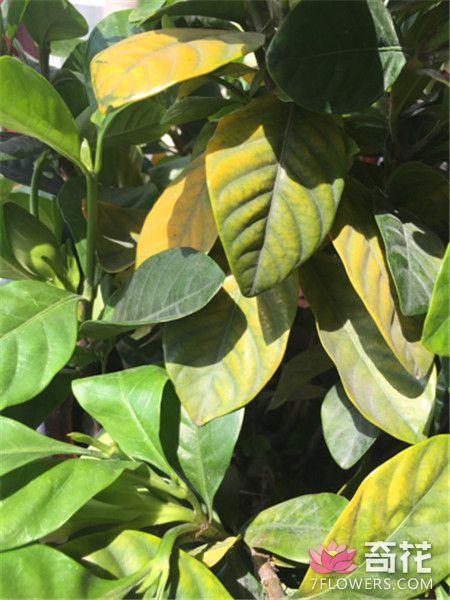
解决方法
室内养殖的栀子花大概2~3天就得浇一次水,如果是直接露养的,那大概1~2天就得浇一次水。
2、土壤偏碱
栀子花喜欢微酸性的土壤,但是北方的土壤一般都偏碱,就算是一开始不偏碱,一直浇自来水也会慢慢变碱。
解决方法
用1:1000~2000的硫酸亚铁溶液直接灌根,半个月或者是1个月1次都行~
#栀子花 喜水,夏季蒸发量非常大,通常叶子发黄是水跟不上造成的。

解决方法
室内养殖的栀子花大概2~3天就得浇一次水,如果是直接露养的,那大概1~2天就得浇一次水。
2、土壤偏碱
栀子花喜欢微酸性的土壤,但是北方的土壤一般都偏碱,就算是一开始不偏碱,一直浇自来水也会慢慢变碱。
解决方法
用1:1000~2000的硫酸亚铁溶液直接灌根,半个月或者是1个月1次都行~
1
5
文章
Dummer. ゛☀
2017年07月12日

Family - Lamiaceae
Stems - To +80cm tall, erect, herbaceous, multiple or single from base, branching, 4-angled, glabrous, from thin rhizomes.
Leaves - Opposite, sessile, entire, linear, acute, to 5.5cm long, 2-4mm broad, glabrous, dark green above, lighter green below, punctate.
Inflorescence - Compact corymbose arrangement of glomerules. Glomerules +/-7mm broad, 4mm tall(long), with an involucre of attenuate pubescent bracts. Bracts 3-4mm long, 2mm broad, with densely ciliate margins, reduced inward. Flowers sessile.
Flowers - Corolla white to pinkish, bilabiate. Corolla tube to -5mm long, pubescent externally near apex. Upper lip single-lobed. Lobe to 2.6mm long, 1.4mm broad, emarginate, pubescent internally and externally. Lower lip 3-lobed, with faint pinkish spotting. Central lobe longer than lateral lobes, to 2.5mm long, 1.2mm broad, pubescent internally and externally. Stamens 4, didynamous, adnate at apex of corolla tube. Filaments to 1.9mm long, white, glabrous. Anthers pale lilac, .4mm broad. Style white, to 6mm long, glabrous, long exserted, tuberculate and expanded just above ovary. Stigma 2-lobed. Ovary 4-parted, green, glabrous. Calyx tube 2.7mm long, lanate, 4-lobed. Lobes equal, acute, to 1.1mm long, short pubescent to glabrous externally, glabrous internally. Nutlets dark brown at maturity, to 1mm long.
Flowering - June - September.
Habitat - Dry rocky open woods, prairies, wet thickets, meadows, streambanks, roadsides, railroads.
Origin - Native to U.S.
Other info. - This species is common throughout the entire state of Missouri.
This member of the mint family is easy to recognize because of its thin dense leaves and its dense small flower clusters (glomerules). Insects like to visit the plant to retrieve nectar. The leaves and stem have a strong minty odor and the plant can be brewed as a tea.
Stems - To +80cm tall, erect, herbaceous, multiple or single from base, branching, 4-angled, glabrous, from thin rhizomes.
Leaves - Opposite, sessile, entire, linear, acute, to 5.5cm long, 2-4mm broad, glabrous, dark green above, lighter green below, punctate.

Inflorescence - Compact corymbose arrangement of glomerules. Glomerules +/-7mm broad, 4mm tall(long), with an involucre of attenuate pubescent bracts. Bracts 3-4mm long, 2mm broad, with densely ciliate margins, reduced inward. Flowers sessile.
Flowers - Corolla white to pinkish, bilabiate. Corolla tube to -5mm long, pubescent externally near apex. Upper lip single-lobed. Lobe to 2.6mm long, 1.4mm broad, emarginate, pubescent internally and externally. Lower lip 3-lobed, with faint pinkish spotting. Central lobe longer than lateral lobes, to 2.5mm long, 1.2mm broad, pubescent internally and externally. Stamens 4, didynamous, adnate at apex of corolla tube. Filaments to 1.9mm long, white, glabrous. Anthers pale lilac, .4mm broad. Style white, to 6mm long, glabrous, long exserted, tuberculate and expanded just above ovary. Stigma 2-lobed. Ovary 4-parted, green, glabrous. Calyx tube 2.7mm long, lanate, 4-lobed. Lobes equal, acute, to 1.1mm long, short pubescent to glabrous externally, glabrous internally. Nutlets dark brown at maturity, to 1mm long.

Flowering - June - September.
Habitat - Dry rocky open woods, prairies, wet thickets, meadows, streambanks, roadsides, railroads.
Origin - Native to U.S.
Other info. - This species is common throughout the entire state of Missouri.
This member of the mint family is easy to recognize because of its thin dense leaves and its dense small flower clusters (glomerules). Insects like to visit the plant to retrieve nectar. The leaves and stem have a strong minty odor and the plant can be brewed as a tea.
0
0
文章
Colour_
2017年07月11日
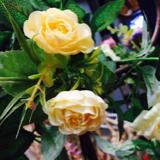
洛神花又名玫瑰茄、洛神葵、山茄等,是锦葵科木槿属的一年生草本植物,植株高1.5~2米,茎淡紫色,直立,主干多分枝。叶互生。花在夏秋间开放,花期长,花萼杯状,紫红色,花冠黄色。有淡淡的香气。每当开花季节,红、绿、黄相间,十分美丽,有“植物红宝石”的美誉。
下面讲讲洛神花在养殖过程中又有哪些注意事项?

洛神花的养殖光照
洛神花是一种种植在阴凉条件下的植物,所以每日的光照时数会影响它的生长,日照时数对于花蕾开花期有着极为显著的影响。
洛神花的养殖湿度
洛神花是一种比较喜欢干燥土壤的植物,一般来说,如果将其种植在水分充足、肥料充足的环境中,极易引发疾病,种植在较为干燥的环境中,反而生长的旺盛。
洛神花的养殖土壤
洛神花对土壤的要求并不是很高,在一般肥力的土壤中就可以生存,如果生长在肥力好的土壤中,分支会多,但是容易产生倒伏现象,如果生长在比较贫瘠的土壤中,会发生白化苗的疾病,所以洛神花最好的养殖土壤是半熟化的黄泥土。
洛神花的养殖温度
洛神花种子生长最适宜的温度在20摄氏度到25摄氏度之间,每日平均温度在16摄氏度左右就能够发芽。
洛神花的防治病虫害
洛神花的病虫害并不多,比较常见的像:菜青虫、蚜虫等,病害有枯萎病、白化苗等。要注意及时防治。

拓展:食用功效
有消暑、降压、强化血管弹性之功效。可治高血压、中暑、咳嗽、酒醉。清热解毒,有帮助消化、生津止渴的效果,也是减肥佳品。久居喧嚣的都市,任何人都会对闲逸的大自然充满渴望,而花果茶的风靡显然在某种程度上满足了人们的这种浪漫情怀。
洛神花气微香、味酸,维生素C、接骨木三糖苷、柠檬酸等营养成份,有益于调节和平衡血脂,增进钙质吸收,促进儿童发育,促进消化等。具有清凉解毒利水,降血压等等功效。无毒性。
下面讲讲洛神花在养殖过程中又有哪些注意事项?

洛神花的养殖光照
洛神花是一种种植在阴凉条件下的植物,所以每日的光照时数会影响它的生长,日照时数对于花蕾开花期有着极为显著的影响。
洛神花的养殖湿度
洛神花是一种比较喜欢干燥土壤的植物,一般来说,如果将其种植在水分充足、肥料充足的环境中,极易引发疾病,种植在较为干燥的环境中,反而生长的旺盛。
洛神花的养殖土壤
洛神花对土壤的要求并不是很高,在一般肥力的土壤中就可以生存,如果生长在肥力好的土壤中,分支会多,但是容易产生倒伏现象,如果生长在比较贫瘠的土壤中,会发生白化苗的疾病,所以洛神花最好的养殖土壤是半熟化的黄泥土。
洛神花的养殖温度
洛神花种子生长最适宜的温度在20摄氏度到25摄氏度之间,每日平均温度在16摄氏度左右就能够发芽。
洛神花的防治病虫害
洛神花的病虫害并不多,比较常见的像:菜青虫、蚜虫等,病害有枯萎病、白化苗等。要注意及时防治。

拓展:食用功效
有消暑、降压、强化血管弹性之功效。可治高血压、中暑、咳嗽、酒醉。清热解毒,有帮助消化、生津止渴的效果,也是减肥佳品。久居喧嚣的都市,任何人都会对闲逸的大自然充满渴望,而花果茶的风靡显然在某种程度上满足了人们的这种浪漫情怀。
洛神花气微香、味酸,维生素C、接骨木三糖苷、柠檬酸等营养成份,有益于调节和平衡血脂,增进钙质吸收,促进儿童发育,促进消化等。具有清凉解毒利水,降血压等等功效。无毒性。
0
0
文章
Colour_
2017年07月11日

蓝蝴蝶花朵盛开时酷似群蝶飞舞.花姿优雅.因形似蝴蝶而得名蓝蝴蝶。下面来讲讲蓝蝴蝶的养殖方法和注意事项吧。
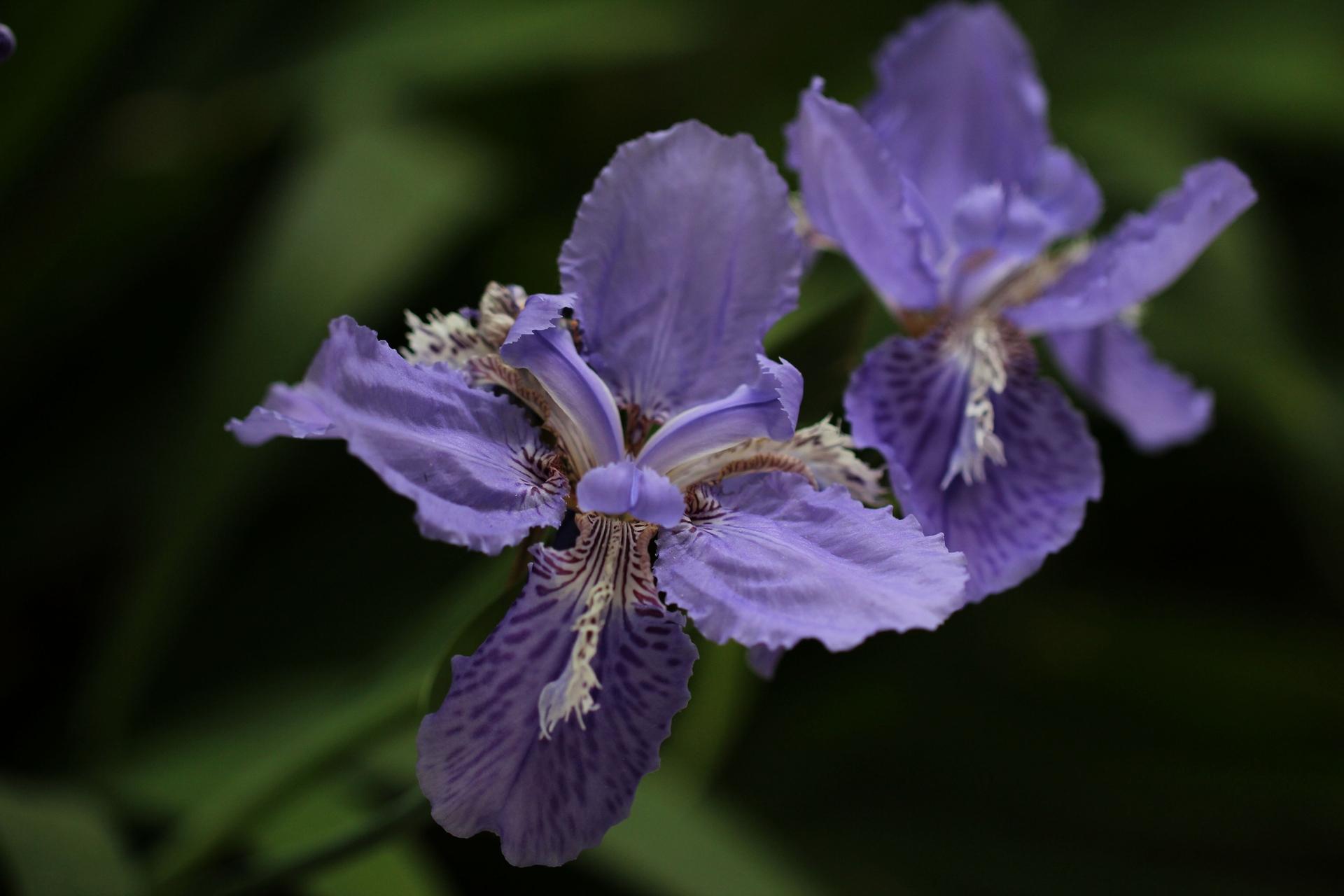
蓝蝴蝶的养殖方法
温度
蓝蝴蝶喜欢高温天气,适宜的生长温度大约为23-32℃。冬季需将植株放置在温暖避风的地方以安全越冬。
光照
适宜将蓝蝴蝶植株置于半日照至全日照的生长环境,不过切忌长时间暴晒,否则叶片会变黄,降低观赏价值。
施肥
冬末春初施一次长效性肥料,开花后再补充一次即可。
土壤
蓝蝴蝶的栽培基质适宜选用肥沃且排水性良好的壤土或砂质壤土。
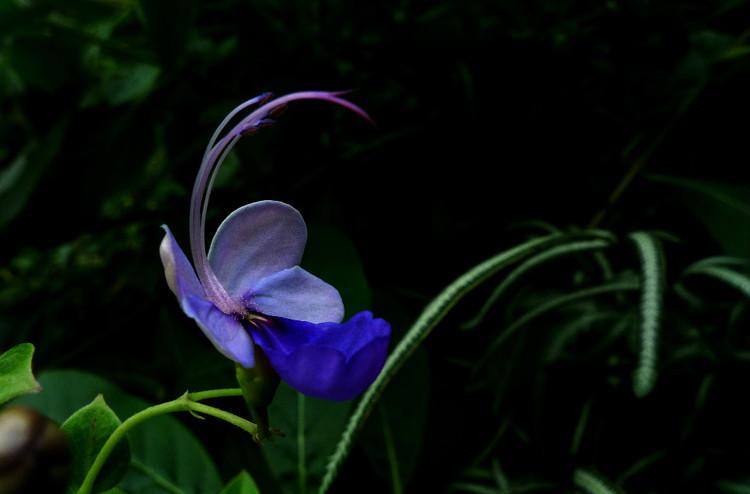
蓝蝴蝶的养殖注意事项
在冬季低温情况下,会出现稍微落叶的休眠现象。蓝蝴蝶开花后可适当进行矮化修剪,避免其生长得越来越高且越来越稀疏。

蓝蝴蝶的养殖方法
温度
蓝蝴蝶喜欢高温天气,适宜的生长温度大约为23-32℃。冬季需将植株放置在温暖避风的地方以安全越冬。
光照
适宜将蓝蝴蝶植株置于半日照至全日照的生长环境,不过切忌长时间暴晒,否则叶片会变黄,降低观赏价值。
施肥
冬末春初施一次长效性肥料,开花后再补充一次即可。
土壤
蓝蝴蝶的栽培基质适宜选用肥沃且排水性良好的壤土或砂质壤土。

蓝蝴蝶的养殖注意事项
在冬季低温情况下,会出现稍微落叶的休眠现象。蓝蝴蝶开花后可适当进行矮化修剪,避免其生长得越来越高且越来越稀疏。
0
1
文章
Dummer. ゛☀
2017年07月11日

Family - Asclepiadaceae
Stems - To +/-60cm tall, erect, herbaceous, from rhizomes and fleshy roots, branching in upper 1/2, with short pubescence in vertical lines from between leaf bases. Internodes short.

Leaves - Sessile to short petiolate, (the petioles to -2mm long), linear, in whorls of 3-6 at each node, glabrous or with some pubescence, +/- 7cm long, 2-3mm broad, acute, with single prominent midrib. Margins revolute creating a terete effect.
Inflorescence - Axillary pedunculate umbels. Peduncles to +3cm long, pubescent. Flowers typically 10-20 per umbel. Pedicels purplish at base, 8-9mm long, pubescent. Typically 0-2 bracts present at the base of the umbels. Bracts linear and short.

Flowers - Petals greenish-white, purplish at apex, elliptic-oblong, 4-5mm long, 2mm broad, recurved with the tips slightly spreading, glabrous to minutely puberulent at the base internally,(use a lens to see). Hoods white, to 1.5mm long, glabrous. Horns white, 1.7mm long, loosely converging over anther column. Anther column greenish, white at apex, 2mm long. Pollinia 1.2mm long, translator deep purplish-brown. Pistils 2, glabrous, greenish, 2mm long. Follicles to 10cm long, 1cm broad.

Flowering - May - September.
Habitat - Prairies, pastures, open woods, roadsides, railroads.
Origin - Native to U.S.
Other info. - This attractive little species can be found throughout Missouri. Like most of the species in this family the plant is toxic. This is one of the most easily recognized members of the genus because of the thread-like, whorled leaves. Because it handles dry conditions very well, A. verticillata would make a fine garden specimen. Many flying insects are attracted to its flowers.
Stems - To +/-60cm tall, erect, herbaceous, from rhizomes and fleshy roots, branching in upper 1/2, with short pubescence in vertical lines from between leaf bases. Internodes short.

Leaves - Sessile to short petiolate, (the petioles to -2mm long), linear, in whorls of 3-6 at each node, glabrous or with some pubescence, +/- 7cm long, 2-3mm broad, acute, with single prominent midrib. Margins revolute creating a terete effect.
Inflorescence - Axillary pedunculate umbels. Peduncles to +3cm long, pubescent. Flowers typically 10-20 per umbel. Pedicels purplish at base, 8-9mm long, pubescent. Typically 0-2 bracts present at the base of the umbels. Bracts linear and short.

Flowers - Petals greenish-white, purplish at apex, elliptic-oblong, 4-5mm long, 2mm broad, recurved with the tips slightly spreading, glabrous to minutely puberulent at the base internally,(use a lens to see). Hoods white, to 1.5mm long, glabrous. Horns white, 1.7mm long, loosely converging over anther column. Anther column greenish, white at apex, 2mm long. Pollinia 1.2mm long, translator deep purplish-brown. Pistils 2, glabrous, greenish, 2mm long. Follicles to 10cm long, 1cm broad.

Flowering - May - September.
Habitat - Prairies, pastures, open woods, roadsides, railroads.
Origin - Native to U.S.
Other info. - This attractive little species can be found throughout Missouri. Like most of the species in this family the plant is toxic. This is one of the most easily recognized members of the genus because of the thread-like, whorled leaves. Because it handles dry conditions very well, A. verticillata would make a fine garden specimen. Many flying insects are attracted to its flowers.
0
0
文章
Colour_
2017年07月11日

富贵竹,又名达龙血树、绿叶仙龙血树,属常绿小乔木。其茎干直立、粗壮,株态玲珑,高达2米以上,叶片浓绿,叶长披针形,生长强健,水栽易活。
富贵竹粗生粗长,茎杆挺拔,叶色浓绿,冬夏常青,无论盘栽还是剪取茎干瓶插或加工"开运竹"、"弯竹",都显得疏挺高洁,茎叶纤秀,姿态潇洒,富有竹韵,观赏价极高。下面我们为你详细解答下,富贵竹怎么养:
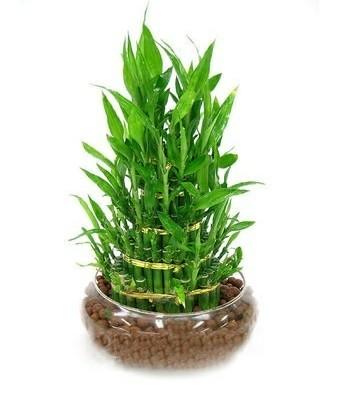
富贵竹养殖的繁殖方法:
富贵竹长势猛、发根长芽力强。因此,常采用扦插繁殖,只要气温适宜整年都可进行,一般剪取不带叶的茎段作插穂,长约5~ 10厘米,最好有3个节间,然后插于沙床中或半泥沙土中。在南方春、秋季一般25~30天可萌生根、芽,35天便可上盘。另外,水插也可生根,还可进行无土栽培。
(1)扦插繁殖
繁殖及栽培常用扦插繁殖,扦插时将茎段切成长lO~12厘米或2~3节的插穗插于沙床,2~3周可发根长芽,只要温度在12℃以上,全年均可扦插。
(2)分株繁殖
也可用茎基长出的根吸芽,分株繁殖。
富贵竹养殖的注意事项:
富贵竹可以制成宝塔形,作为礼品赠送,代表吉祥、富贵、发财恭喜之意;在其养殖中要注意控制顶侧芽,以使得富贵竹长得好,更具有观赏价值。
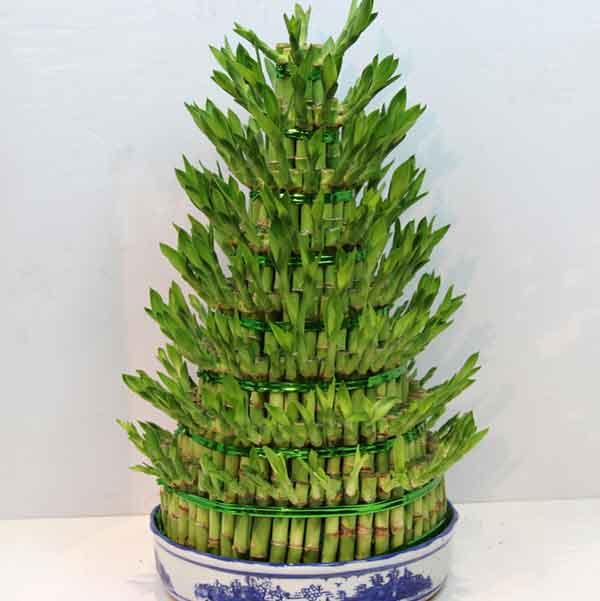
1、富贵竹控制顶侧芽的注意事项
富贵竹的枝叶容易无休止地疯长,如不处理,会影响观赏效果;抑制枝叶徒长的办法有:
(1)控制浇水。要放在低温,18℃以下养护,需经常换水,以防止根都腐烂。
(2)摘心,各茎段顶芽长到1厘米时,抽掉顶尖,也就是用左手固定竹塔,右手的拇指、食指小心捏紧尖端两小叶,用力外抽抽出心叶,要小心不要伤及别的小叶。
2、富贵竹造型的注意事项
富贵竹具有吉祥的意思,无论送人或是自己观赏,都是美的享受,还可以根据喜好,为其造型。
(1)宝塔形。富贵竹生长强健,生命力强,繁殖力强,而且管理容易,根据这些特点,采用大量繁殖新竹,截取众多长短不同的茎干组成宝塔,每条茎干的上端必须带笋,要保留芽眼使每层宝塔的顶端能长芽和生长枝叶,以形成新的活的宝塔。
(2)瓶式盆景。截取富贵竹茎尾长大约20厘米,扦插在花瓶或挂瓶中,然后放水深5厘米,数天换水一次,平时可放在室内阴凉通风的几案上,经久可保持叶色翠绿,别有一番情趣。
(3)绿色柱子。在厅堂屏风的两侧放置两盆富贵竹,若长期不移动不修剪,任其自由生长,使之扶摇直上,可长高1米以上,便形成绿色的柱子。。
(4)丛林式盆景。新竹长大后可剪除老、弱、密竹,适当修剪整形,从而制成丛林式;定型后剥除竹干下层枯杆和老叶,可看见青翠、明亮、富有光泽的竹节,与山石相互映衬,可提高观赏效果。
富贵竹粗生粗长,茎杆挺拔,叶色浓绿,冬夏常青,无论盘栽还是剪取茎干瓶插或加工"开运竹"、"弯竹",都显得疏挺高洁,茎叶纤秀,姿态潇洒,富有竹韵,观赏价极高。下面我们为你详细解答下,富贵竹怎么养:

富贵竹养殖的繁殖方法:
富贵竹长势猛、发根长芽力强。因此,常采用扦插繁殖,只要气温适宜整年都可进行,一般剪取不带叶的茎段作插穂,长约5~ 10厘米,最好有3个节间,然后插于沙床中或半泥沙土中。在南方春、秋季一般25~30天可萌生根、芽,35天便可上盘。另外,水插也可生根,还可进行无土栽培。
(1)扦插繁殖
繁殖及栽培常用扦插繁殖,扦插时将茎段切成长lO~12厘米或2~3节的插穗插于沙床,2~3周可发根长芽,只要温度在12℃以上,全年均可扦插。
(2)分株繁殖
也可用茎基长出的根吸芽,分株繁殖。
富贵竹养殖的注意事项:
富贵竹可以制成宝塔形,作为礼品赠送,代表吉祥、富贵、发财恭喜之意;在其养殖中要注意控制顶侧芽,以使得富贵竹长得好,更具有观赏价值。

1、富贵竹控制顶侧芽的注意事项
富贵竹的枝叶容易无休止地疯长,如不处理,会影响观赏效果;抑制枝叶徒长的办法有:
(1)控制浇水。要放在低温,18℃以下养护,需经常换水,以防止根都腐烂。
(2)摘心,各茎段顶芽长到1厘米时,抽掉顶尖,也就是用左手固定竹塔,右手的拇指、食指小心捏紧尖端两小叶,用力外抽抽出心叶,要小心不要伤及别的小叶。
2、富贵竹造型的注意事项
富贵竹具有吉祥的意思,无论送人或是自己观赏,都是美的享受,还可以根据喜好,为其造型。
(1)宝塔形。富贵竹生长强健,生命力强,繁殖力强,而且管理容易,根据这些特点,采用大量繁殖新竹,截取众多长短不同的茎干组成宝塔,每条茎干的上端必须带笋,要保留芽眼使每层宝塔的顶端能长芽和生长枝叶,以形成新的活的宝塔。
(2)瓶式盆景。截取富贵竹茎尾长大约20厘米,扦插在花瓶或挂瓶中,然后放水深5厘米,数天换水一次,平时可放在室内阴凉通风的几案上,经久可保持叶色翠绿,别有一番情趣。
(3)绿色柱子。在厅堂屏风的两侧放置两盆富贵竹,若长期不移动不修剪,任其自由生长,使之扶摇直上,可长高1米以上,便形成绿色的柱子。。
(4)丛林式盆景。新竹长大后可剪除老、弱、密竹,适当修剪整形,从而制成丛林式;定型后剥除竹干下层枯杆和老叶,可看见青翠、明亮、富有光泽的竹节,与山石相互映衬,可提高观赏效果。
0
0
文章
Dummer. ゛☀
2017年07月11日

Family - Lamiaceae
Stems - From fibrous roots, to 3m tall, 4-angled, winged, glabrous or with sparse retrorse hairs on the angles, hollow, herbaceous, erect, branching (typically in the apical 1/2), single from the base.

Leaves - Opposite, petiolate, decussate. Petioles to +7cm long, with an adaxial groove, mostly glabrous but sparse pilose in the groove especially near the base of the blade. Blades ovate, to 11cm broad, 15cm long, crenate-serrate to serrate, rounded or subcordate at the base, acute, villous below, sparse pubescent above. Veins impressed adaxially, expressed abaxially.

Inflorescence - A terminal spike of closely clustered verticillasters. Spike to 20cm tall, 1.5cm in diameter, bracteate. Peduncle of spike densely pubescent. Each cyme of a verticillaster composed of +/-10 flowers. Flowers sessile. Bracts subtending the flowers equaling or shorter than the calyx.
Flowers - Corolla whitish, bilabiate, puberulent externally and internally, to 1cm long. Upper lip single-lobed. Lobe notched at apex, 1.6mm long, 2.1mm broad. Lower lip 3-lobed. Lateral lobes reduced and rounded, -1mm long. Central lobe expanded, 2mm long, +3mm broad, with lateral appendages, cupped. Stamens 4, exserted, didynamous, adnate in the apical 1/3 of the corolla tube. Filaments white, glabrous above, sparse pubescent basally, to 6mm long. Anthers bi-lobed, yellow, to .9mm broad. Style exserted, glabrous, white, 1.1cm long. Stigma 2-lobed. Ovary 4-lobed, subtended by a nectariferous ring, -.9mm broad. Lobes glandular apically, pubescent. Calyx tubular, subequally 5-lobed, puberulent, 5mm long in flower, accrescent. Lobes acute, entire, to 1.7mm long. Fruit of 4 nutlets. Nutlets pubescent.
Flowering - July - September.
Habitat - Open woods, thickets, moist soils, railroads.
Origin - Native to U.S.
Other info. - This species is common throughout Missouri. It is considered weedy but is quite striking and should be cultivated more. The corollas on the plants I have seen are mostly white. Most of the literature gives the corollas as yellowish to green. White seems to be the predominate color although the flowers do fade to a yellowish color when old.
Traditionally this species was used mixed with others and used to treat poison ivy.
Agastache is in the mint family but lacks a characteristic mint fragrance. nepetoides means "looks like Nepeta", which is catnip, and the two plants are fairly similar.
Stems - From fibrous roots, to 3m tall, 4-angled, winged, glabrous or with sparse retrorse hairs on the angles, hollow, herbaceous, erect, branching (typically in the apical 1/2), single from the base.

Leaves - Opposite, petiolate, decussate. Petioles to +7cm long, with an adaxial groove, mostly glabrous but sparse pilose in the groove especially near the base of the blade. Blades ovate, to 11cm broad, 15cm long, crenate-serrate to serrate, rounded or subcordate at the base, acute, villous below, sparse pubescent above. Veins impressed adaxially, expressed abaxially.

Inflorescence - A terminal spike of closely clustered verticillasters. Spike to 20cm tall, 1.5cm in diameter, bracteate. Peduncle of spike densely pubescent. Each cyme of a verticillaster composed of +/-10 flowers. Flowers sessile. Bracts subtending the flowers equaling or shorter than the calyx.
Flowers - Corolla whitish, bilabiate, puberulent externally and internally, to 1cm long. Upper lip single-lobed. Lobe notched at apex, 1.6mm long, 2.1mm broad. Lower lip 3-lobed. Lateral lobes reduced and rounded, -1mm long. Central lobe expanded, 2mm long, +3mm broad, with lateral appendages, cupped. Stamens 4, exserted, didynamous, adnate in the apical 1/3 of the corolla tube. Filaments white, glabrous above, sparse pubescent basally, to 6mm long. Anthers bi-lobed, yellow, to .9mm broad. Style exserted, glabrous, white, 1.1cm long. Stigma 2-lobed. Ovary 4-lobed, subtended by a nectariferous ring, -.9mm broad. Lobes glandular apically, pubescent. Calyx tubular, subequally 5-lobed, puberulent, 5mm long in flower, accrescent. Lobes acute, entire, to 1.7mm long. Fruit of 4 nutlets. Nutlets pubescent.
Flowering - July - September.
Habitat - Open woods, thickets, moist soils, railroads.
Origin - Native to U.S.
Other info. - This species is common throughout Missouri. It is considered weedy but is quite striking and should be cultivated more. The corollas on the plants I have seen are mostly white. Most of the literature gives the corollas as yellowish to green. White seems to be the predominate color although the flowers do fade to a yellowish color when old.
Traditionally this species was used mixed with others and used to treat poison ivy.
Agastache is in the mint family but lacks a characteristic mint fragrance. nepetoides means "looks like Nepeta", which is catnip, and the two plants are fairly similar.
0
0






